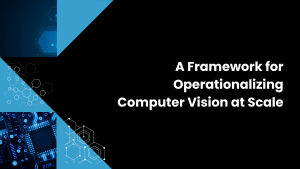Premise
The Partnership between AWS and VMware promises performant and cost-effective hybrid cloud topologies for VMware uses, allowing significant integration between systems of record, system of engagement and systems of intelligence. VMware customers can achieve this without large-scale conversion of applications, processes and procedures and avoiding the business dislocation that conversions typically force on IT and the enterprise.
The AWS VMware Partnership
VMware will use AWS Infrastructure-as-a-service (IaaS) to offer a full stack of VMware Cloud on AWS service based on vSphere, VSAN and NSX, and managed by vCenter. The top half of Figure 1 illustrates picking a VMware configuration (# hosts, # GHz, # GB DRAM, # TB Storage), and the bottom half illustrates the payment terms (by-the-drink, 1-year reserved, 3-year reserved) and payment methods (credit card or VMware Account). VMware is responsible for first-line support of the service and VMware software.

Source: AWS and VMware Demonstration October 13, 2016
VMware Cloud on AWS runs directly on the bare-metal servers with the VMware hypervisor, which allows VMware to run their virtualization stack without having to use nested virtualization (as is the case with Oracle’s Revello). The VMware AWS Cloud is also supported by AWS security, fast and low-latency connectivity, the AWS Storage Gateway and the AWS Import/Export Snowball.
Many details are still sketchy — the service will not be up and running until mid-2017 — which generates many open questions, including:
- Performance management on the AWS cloud;
- Storage configurations, especially for performance sensitive VMs;
- Licensing of databases and other ISV software;
- Overall pricing strategies.
Wikibon will be probing and publishing the answers as they become available.
And of course it will be open season for AWS to be selling conversion to AWS. As their blog openly says, “When you are ready to modernize…”, AWS has the VMware, database conversion tools and other tools. One of the few concerns we heard from users after this deal was VMware’s ability to remain focused on the promised outcomes despite an ongoing barrage of minor AWS provocations.
Cloud Positioning
Figure 2 below show the Wikibon positioning of different clouds on two axis; size of customer and the application value delivered. This is a result of detailed analysis of the Cloud strategies and positioning of AWS, Microsoft, Oracle and VMware.

Source: © Wikibon 2016. Note the size of the clouds in this figure does not represent the revenue
All the companies are primarily software companies. Oracle and Microsoft own a large business application portfolios, which have moved or are being moved to run on their own clouds as SaaS (software as a service). These applications are “sticky”, and are well entrenched. Both Oracle and Microsoft have a strong hybrid cloud strategy. Microsoft has the Azure stack, and is very strong in small and mid-sized companies. Oracle has recently announced the Oracle Cloud Machine, which runs the same software on-premise as the Oracle Cloud Service does. Both Oracle and Microsoft offer IaaS virtualization services, Microsoft with its Hyper-V strategy, and Oracle with its newly acquired Ravello service (see Footnote1 in Footnotes below).
AWS and VMware have many ISVs who run business applications on their platforms. VMware is strongly established in enterprise IT, and is the software that manages a high percentage of on-premise and private clouds. Wikibon analysis of AWS case studies shows the majority of customers have lower levels of application value. Neither VMware or AWS have a strong hybrid cloud strategy. VMware has not been successful with getting service providers to run strongly with vRealize, and AWS has strongly pushed the theme that all computing should be in the public cloud.
The strength of the partnership between AWS is that it gives VMware customers a strong public cloud provider, and allows VMware customers to run in a public cloud without huge conversion costs. This “network” effect allows many of business-led applications running in AWS much easier access to VMware data, and vice-versa, and increases the hybrid topologies available to VMware customers.
Figure 3 below shows that Amazon has 31% of IaaS business in 2016, and can expect to increase this substantially with a well establish and highly regarded ISV, VMware. This “network” effect also allows AWS to sell AWS services to line-of-business and IT for the development of new applications, especially for applications that need access to data within VMware, or from other cloud sources. This should allow AWS to move up in the application value delivered.

Source: © Wikibon 2016
AWS Edge Appliance Strategy
Wikibon and others have pointed out that microseconds matter in many applications. As IoT sensors provide an increasing flood of data, Wikibon research such as the “Industrial IoT and the Edge” and “The Vital Role of “Edge Computing” in the Internet of Things” show that robust distributed “Edge” computing is an imperative for competing long-term in the IoT market.
The partnership allows VMware users to distribute systems into “Edge” environments (e.g., Pivot3 is built on VMware vSphere and vCenter). By connecting edge devices to VMware Cloud on AWS, users can then connect to AWS IoT services.
However, this is a very indirect method with potentially high processing and latency overheads. Wikibon believes that AWS will announce a distributed AWS system that can be directly managed by the AWS cloud to address Edge requirement. Wikibon is estimates announcement in 2017.
Conclusions
The AWS/VMware partnership is a good deal for VMware users, offering them choices of cloud vendor (IBM or AWS). The most important benefit is that VMware users can approach the cloud without the specter of conversion, and can look to build applications and application suites that span AWS services and VMware serves. This has the potential to provide high business value to lines of business.
The caveat is that the devil is in the details. VMware does not have a track record of successful partnerships. Many important details of pricing, interfacing and function have yet to be agreed. Significant compromise is needed from two successful and aggressive companies who don’t compromise easily.
Action Item
The agreement and partnership between AWS and VMware is of major importance to all senior IT executives with strategic responsibilities. IT should be ready to test out the service as soon as it become available.
Footnotes
Footnote 1 Ravello Systems allows VMware workloads on public clouds – without any changes. Ravello Systems was acquired by Oracle in early 2016, and is now included in Oracle Cloud Services.


